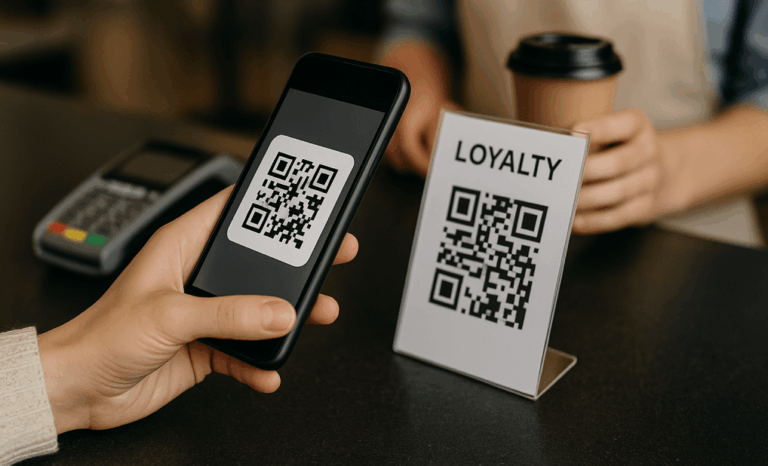In today’s fast-paced, digitally connected world, customer loyalty is more valuable than ever. With fierce competition across industries, businesses must find innovative ways to not only attract new customers but also retain existing ones. One of the most effective tools for enhancing customer loyalty and engagement is QR code loyalty programs.
With the rise of smartphones and mobile apps, QR codes have become a bridge between physical and digital marketing strategies. Through QR Code KIT, a powerful QR code generator, businesses can seamlessly integrate QR codes into their loyalty programs, turning ordinary customer interactions into opportunities for deeper engagement and increased retention.
In this comprehensive guide, we’ll explore how QR code loyalty programs work, why they matter, and how you can use them to transform your customer relationships, collect valuable insights, and reward loyal customers in meaningful ways.
Why loyalty programs still matter
In a crowded market, customers are bombarded with choices. Loyalty programs provide a structured way to encourage repeat purchases, boost customer engagement, and reward loyal customers. But traditional loyalty cards—often lost, forgotten, or unused—can fall short.
This is where QR code based loyalty programs shine. They offer the same benefits as traditional systems, but with modern advantages: ease of use, seamless integration with digital platforms, and powerful data collection capabilities.

What is a QR code loyalty program?
A QR code loyalty program is a digital rewards system that uses QR codes to track customer interactions, purchases, and participation. Customers scan a QR code using their mobile devices, often via a dedicated mobile app, and earn points or rewards based on their activity.
These QR codes can be printed on product packaging, in-store signage, marketing materials, or shared online via marketing channels like email and social media. Depending on the setup, these codes may be static QR codes or dynamic QR codes—each with its own use case and benefit.
Static vs dynamic QR codes
Understanding the difference between static and dynamic codes is crucial for building an effective loyalty program.
- Static QR codes contain fixed information and cannot be changed once generated. They are ideal for basic functions, such as directing customers to a webpage or digital loyalty card.
- Dynamic QR codes, on the other hand, can be edited after creation, allowing businesses to update destinations, track QR code scans, and gather customer data in real time.
For a robust loyalty program, dynamic QR codes are the smarter choice. They offer flexibility, enable personalized loyalty programs, and provide valuable customer data that can be used to analyze customer behavior and refine your marketing strategies.
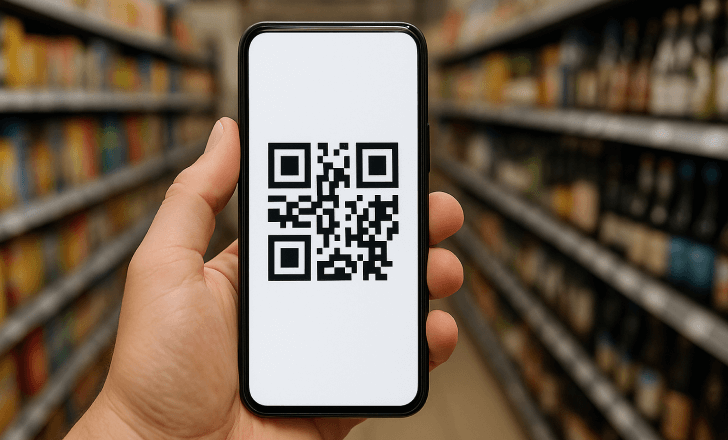
Benefits of integrating QR codes into loyalty programs
Implementing QR code loyalty into your customer retention strategy offers several advantages:
1. Boost customer engagement
Every time a customer scans a QR code, it’s a chance to enhance customer engagement. Whether they’re redeeming a reward, checking their point balance, or entering a contest, QR codes create touchpoints that keep customers engaged throughout the customer journey.
2. Collect valuable customer data
QR code scans can reveal customer preferences, purchase history, and even customer feedback. This data enables businesses to build profiles, segment their target audience, and deliver personalized loyalty programs that truly resonate.
3. Encourage repeat business
By offering points, discounts, or exclusive rewards for scanning QR codes, businesses can incentivize customer behavior that drives repeat business. Customers feel valued and are more likely to return.
4. Streamline program participation
QR codes eliminate friction from the process. No more plastic cards or complex sign-up procedures—customers simply scan QR codes with their phones and instantly join your loyalty program.
5. Strengthen customer relationships
A well-designed QR code loyalty program helps you strengthen customer relationships by recognizing and rewarding loyal customers regularly. This emotional connection boosts brand loyalty and long-term retention.
Use cases for QR code loyalty programs
Here are some powerful ways to use QR codes across different business types:
1. Retail stores
Use branded QR codes on receipts or near checkout to allow customers to collect points instantly. In-store signage can also feature QR codes to join the loyalty program or access exclusive member discounts.
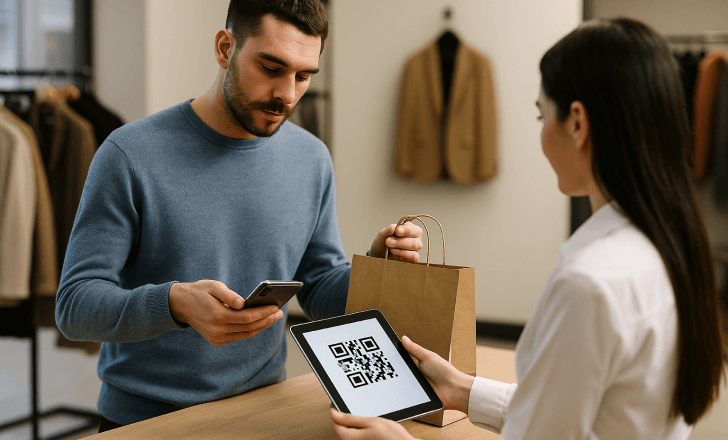
2. Restaurants and Cafés
Print coupon QR codes on menus or coffee cups. Customers can scan them for a free drink after five visits or unlock special rewards during promotions.
3. E-commerce businesses
Include QR code loyalty tags in packaging to encourage customers to register products, provide reviews, or refer friends.
4. Gyms and wellness centers
Use dynamic QR codes to track check-ins or attendance. Offer loyalty points for consistent participation.
5. Events and pop-ups
Distribute QR code loyalty cards during temporary events. Attendees can scan to earn points, learn about future events, or unlock swag.
How to create an effective QR code loyalty program
1. Choose the right QR code generator
Start with a reliable QR code generator like QR Code KIT, which offers both static and dynamic QR codes, analytics, branding options, and API integration. It’s essential for creating scalable and trackable programs.
2. Define your loyalty goals
Are you trying to increase customer retention, encourage repeat purchases, or gain customer feedback? Set clear KPIs to measure success.
3. Incorporate QR codes strategically
Think about your customer journey. Where are the best touchpoints for them to scan QR codes? Consider:
- Receipts
- Product labels
- Table tents
- Digital ads
- Email campaigns
Each point of interaction is an opportunity for deeper customer engagement.
4. Make it easy to participate
Keep the experience simple. Let customers sign up with one scan and provide clear instructions. Add gamification elements or tiered rewards to increase participation.

5. Offer meaningful rewards
Your rewards should align with what your target audience values. Think beyond discounts—offer early access, limited-edition products, or charitable donations on their behalf.
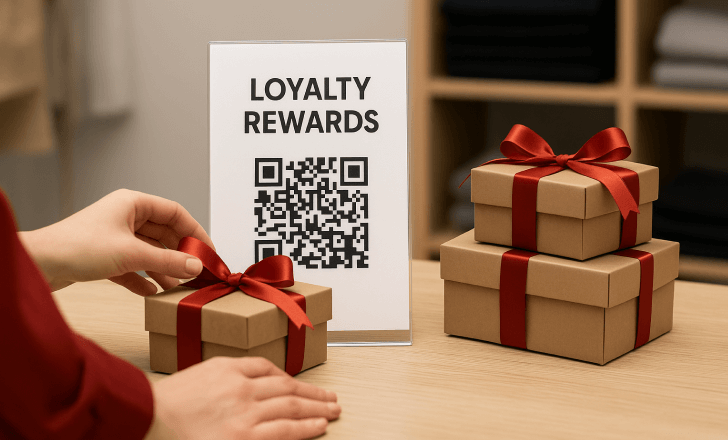
6. Track and optimize
With dynamic QR codes, you can track QR code scans, measure program participation, and test different incentives. Use this data to refine your program and keep it fresh.
Enhance brand identity with branded QR codes
Your QR code generator should allow full customization. Branded QR codes with your logo, colors, and CTAs (calls to action) help maintain brand identity and attract more scans.
QR Code KIT makes it easy to create QR codes that look professional and match your visual style—perfect for building recognition and trust.
Advanced strategies for QR code loyalty success
1. Personalization based on past purchases
Use customer data to send personalized QR codes that offer rewards based on past purchases. For example, a clothing retailer can offer points for accessories that match previous orders.
2. Segmented QR campaigns
Use different QR code campaigns for different segments of your audience (new vs returning customers, VIP vs regular). Tailored messages and rewards increase relevance.
3. Omnichannel integration
Combine QR code loyalty efforts across multiple locations, websites, apps, and social media. The more channels customers interact with, the more data you can collect—and the more opportunities to reward customers.
4. Feedback and surveys
Incorporate QR codes that lead to short feedback forms. Incentivize responses with small rewards or points. You’ll gain valuable insights into what your customers truly want.
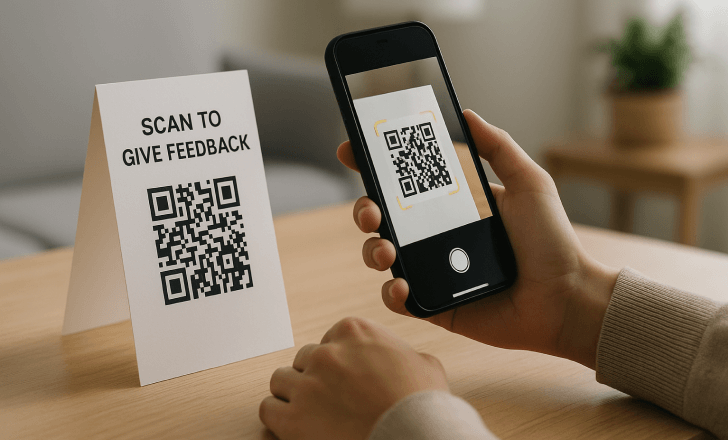
Measuring success: Key metrics
To ensure your QR code loyalty program is working, monitor these metrics:
- Number of QR code scans
- Customer retention rate
- Repeat purchase rate
- Average customer lifetime value
- Redemption rate of rewards
- Number of new sign-ups
- Customer satisfaction scores
- Amount of customer interactions driven by QR codes
Real-world example: A coffee shop’s success story
A small coffee chain used QR Code KIT to create branded QR codes printed on every cup. Each scan gave customers points, which could be redeemed for free drinks or merchandise.
After six months, they saw:
- A 30% increase in repeat business
- Thousands of new customers
- A massive boost in customer feedback and reviews
- More engaged users on social media via QR-driven contests
By analyzing QR code scans and customer behavior, the coffee shop was able to refine its offerings and build stronger customer relationships.
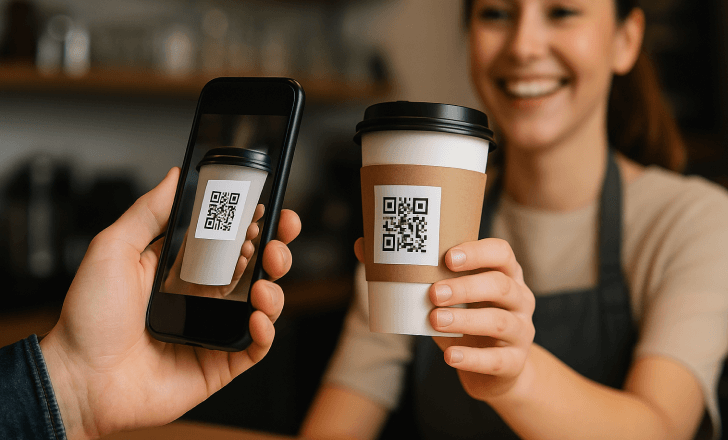
The future of QR code loyalty
As technology evolves, so will QR code loyalty programs. Future trends include:
- Integration with AI to predict and personalize rewards
- Tighter links between mobile devices and customer data
- Combining digital rewards systems with NFTs or blockchain
- Even more frictionless experiences through voice-activated scanning or wearables
One thing is certain: QR code loyalty is not just a trend—it’s a powerful and flexible tool that will define the future of customer loyalty programs.
Final thoughts
QR codes have revolutionized how brands connect with their customers. By adopting a QR code loyalty program, your business can gather valuable customer data, foster repeat purchases, and build brand loyalty that lasts.
Tools like QR Code KIT make it easy to create QR codes, manage your campaigns, and collect insights that drive stronger customer relationships.
Whether you’re a small business or a large enterprise, integrating QR codes into your loyalty programs is a smart move for any brand looking to enhance customer engagement, retain loyal customers, and grow.
Reward customers, understand them better, and keep them coming back—with the power of QR code loyalty.

